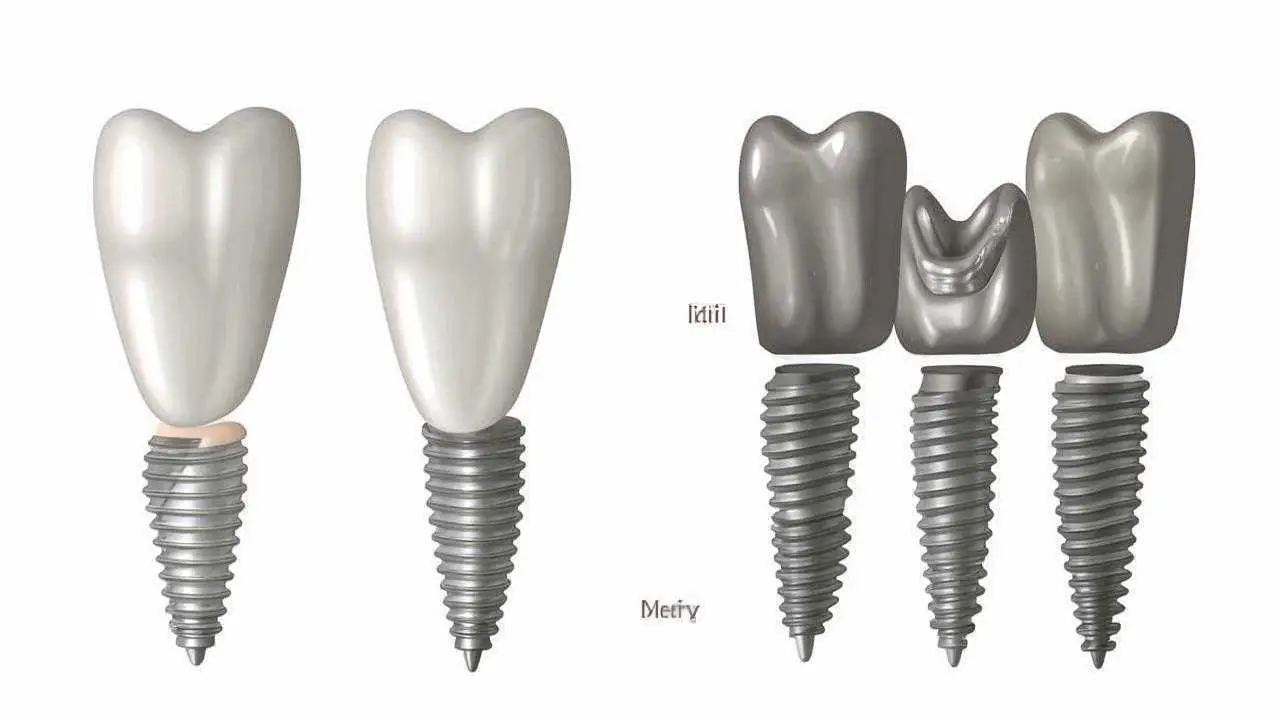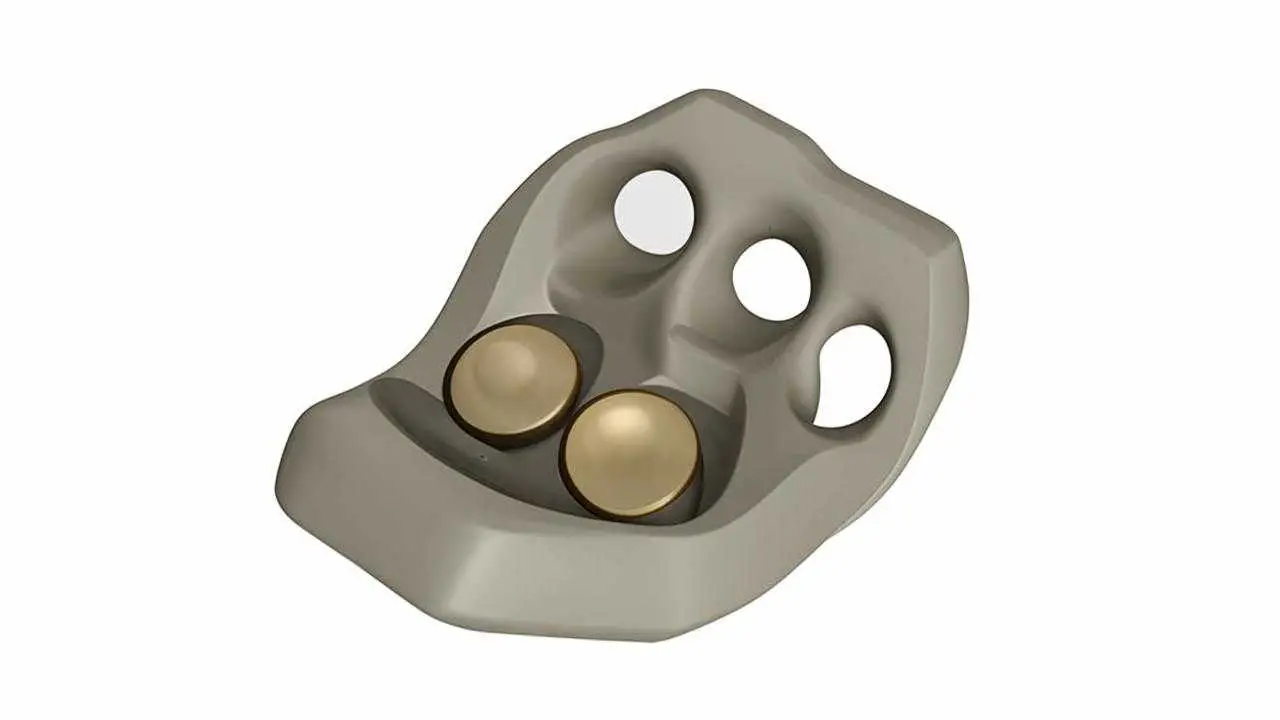Until recently, medical titanium was the only material for implants. Pins made of this metal and its alloys worked well, but unfortunately were not suitable for people with allergies to certain metals. Sometimes patients refused titanium implants for aesthetic reasons. In recent times, they have been joined by adherents of holistic medicine.
Dentists have offered an alternative to the titanium rod – a zirconium implant. Although the first constructions made of ceramic appeared in the late 80s of the last century, they became widespread in the last 10-15 years. In the USA their use was approved only in 2011, in Europe – a little earlier, in 2005.
Advantages and disadvantages
Zirconium implants for teeth are hypoallergenic. This is their main advantage. If a patient develops an allergy to titanium alloy, it will not be limited to itching and redness. The pin will most likely be rejected. With a zirconium implant, there is no need to fear this.
At the same time, allergy to titanium alloys [1] allergies to titanium alloys [1] are very rare. The scientific literature does not provide statistical data, but individual cases.
Other advantages of zirconium:
- Bioinert. Zirconium oxide does not interact with body structures and fluids. Zirconium does not penetrate the blood or lymph, nor does it cause any reactions from the immune system.
- Corrosion resistant. Ceramics do not oxidize, which means there will be no metallic taste in the mouth.
- Has a high degree of bone integration. The implant’s engraftment depends on how soon it overgrows bone tissue. Zirconium has almost the same rate as titanium.
Zirconium oxide products reduce the risk of dental and mucosal diseases. The ceramic surface is very smooth, making it difficult for bacteria to accumulate on it.
Zirconium dioxide implants are white and do not show through the gums, which is especially important if the front teeth need to be restored. When the gum recession (volume reduction) occurs, the gray band of the titanium post becomes visible. In such cases, the ceramic post blends seamlessly with the crown.
But there are no perfect materials, so zirconium also has disadvantages:
- Zirconia dental implants are relatively new, so there are no reviews of the long-term results of their use yet.
Studies of recent implantations (3 years) show that the osseointegration rate for ceramic implants is in the same range as titanium implants (95% or higher) [2]. However, numerous publications confirm that this rate of engraftment in titanium remains even after 10 years. after 10 years [3]. There are no 10-year data on ceramic posts. It is difficult to predict what will happen to them after such a period of time, as no long-term observations have been made.
- Limitations of use
Most ceramic posts are monolithic. This means that the post and abutment (the base for the crown) are one piece. These designs are sometimes referred to as “multijunites.” On the one hand, a multijunite eliminates the entry of bacteria between the post and abutment. On the other hand, it limits the use to certain clinical cases, because it is not possible to change the angle of the abutment. Therefore, ceramic implants are not used to restore a full jaw or a large number of teeth.
The leaders in the production of implantation systems Nobel Biocare, Straumann have started to produce two-piece implants, but they are still a novelty for the vast majority of clinics.
Titanium posts, on the other hand, are produced in such a variety that it is easy to find a solution for each specific case. Well-known brands produce a wide range of products, pins and abutments can be combined depending on the situation.
A large number of teeth can be prosthetized on titanium posts, up to a full jaw.
- Limited product line
There are dozens of variants of titanium products, while zirconium models are still few and far between and the industry is just starting to develop. CeraRoot, the first company to produce zirconium products, has only 7 models, DentalPoint (Zeramex) has 2, Nobel Biocare and Straumann have one each.
Zirconium is very hard and not easy to process. The cost of the material itself, equipment for the production of implants, a small number of manufacturing companies, lead to the fact that the installation of zirconium implants is more expensive than titanium implants.
When implanting with titanium posts, the patient has a choice between premium implants and more budget-friendly options.
Zirconium has high compressive strength, but less bending strength than titanium. Ceramic posts with small diameters(3.5 mm or less) cannot withstand heavy chewing loads. This means that if the bone is thin or if there is a small gap between the teeth, these products cannot be used. Titanium posts with a diameter of 3 mm can easily withstand heavy loads. They are often used for jaws with crowded teeth.
The novelty of zirconium dioxide implants make them difficult to use. These implants can only be placed in a few dental centers, mostly in large cities. Clinics that install titanium implants are much easier to find. They are in every city, even small ones.
The rarity of zirconium implants prevents implantologists from quickly gaining experience in placing them, and the skill of the doctor is of great importance in implantation. That said, any implantologist places dozens of titanium posts a year, honing their skills.
Stages of insertion
Monolithic implants are suitable for one-stage placement using a minimally invasive method – directly into the tooth socket, but they can also be used for separate implantation. Due to the fact that the abutment and post are a single structure, healing under the gum is not possible with these implants. Temporary crowns are placed immediately and then replaced with permanent crowns.
The implantation procedure begins before the operation itself and includes the following stages:
- Examination and diagnosis. The implantologist makes an accurate diagnosis after examining the patient. This includes visual inspection, history taking, CT scans, and blood tests. Based on the diagnosis, a treatment plan is drawn up.
- Preparation of the oral cavity. To reduce the risk of complications, it is necessary to treat tooth decay, eliminate inflammatory processes and remove plaque.
- Installation of the implant. The operation is performed under local anesthesia, takes about 30 minutes.
- Disinfection and suturing. Installation of a temporary crown.
- Rehabilitation period. The patient is given recommendations, which usually include hygiene procedures, changes in diet and lifestyle for the period of healing.
- Removal of sutures
- Prosthetics. Conducted approximately 2.5-3 months later, after a control scan. When installing zirconium implants, a gum shaper is not used. Ceramic crowns are recommended for prosthetics.
Who is suitable for dental implants made of zirconium?
First of all, this material is suitable for people with an allergy to metals. As a result of constant exposure to acids, titanium can corrode. This increases the risk of allergies in patients with hypersensitivity to metals. It is worth bearing in mind that only a few cases of allergy to titanium alloys have been reported and the risk of allergy is very low.
Ceramic designs are recommended for patients with high aesthetic requirements. They do not show through thin gums and do not form a dark stripe if the gum sags. Zirconium implants look natural and do not stand out against other teeth. Therefore, they are most often placed on the front teeth.
Ceramic products are used for single defects or the absence of a small number of teeth. For restorations with complete adentia or a large number of missing units, zirconia restorations are not indicated.
Sources:
[1]https://www.ncbi.nlm.nih.gov/pmc/articles/PMC7698636/
[2]https://pubmed.ncbi.nlm.nih.gov/20369093/
[3]https://pubmed.ncbi.nlm.nih.gov/30904559/


